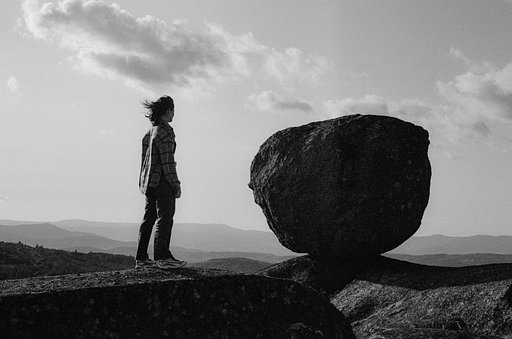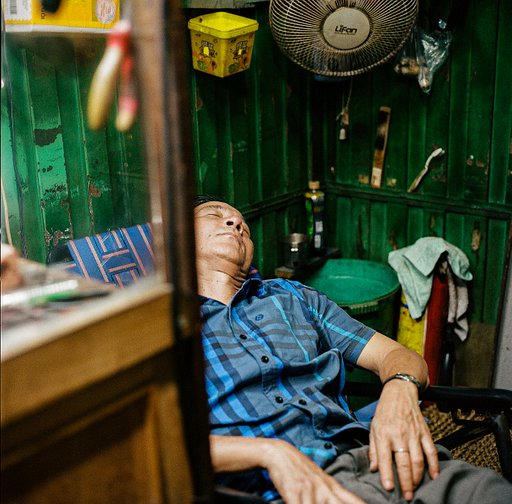In-Depth: Examining The Female Gaze
3 15 Share TweetThe debate around the terms Male Gaze and Female Gaze is a contentious one. The first has been dissected many times and has a clear connotation: Sexual objectification of the female body throught the visual art. The second is more difficult to define.
Art history is full of sexual references if you know where to look. In the Ecstasy of St. Teresa by Lorenzo Bernini for example, her face depicts the female climax. Sure, it is well hidden under the justification that she “sees God”; don't we all at the end?

So why is it so difficult to identify and describe the female gaze? The way desire and pleasure is shown is key. These aspects have always marked a considerable part of what makes the male gaze so powerful.
For the sake of this article let's consider the female gaze in relation to photography. From a photoshoot, the dynamic shown in the final images represents part of the relationship between photographer and subject.
The poses and intentions portrayed are often influenced by the history of visual art and ancient iconography, and therefore understood to be projections of desire. The female gaze does not have equal references.
The stereotypical definition that the female gaze is delicate and tender is still based on the notion that the work is posed and directed with a man-dominated audience in mind, depriving the photographer of an aesthetic of her own.
It seems that there is a very low percentage of photographers who portray heterosexual males in a sexualized manner. Perhaps because there is less history in the visual art that express what is sexual desire for woman. Even though times are changing, it is still at a very early stage compared to the overwhelming amount of material that we have on the opposite side.
In her work Boys Boys Boys , the artist Megan Magdalena, creates an intense series of portraits of her male friends. Frustrated by the censorship that was inflicted on her female portraits on social media, she decided to have male posing in the same fashion as her female models. The images are accompanied by a Q&A conducted with each person reviewing their experience.
The majority of them had a feeling of empowerment and did not feel uncomfortable during the photo shooting. However the visual language expressed by the poses is built on an underlying meaning that we all recognize beyond the verbal language barrier. It makes us think, with more equal representation, will it ever succeed in the mission of subverting from seductive to simply powerful? And If we can't change the rules, are we willing to write new ones?
The idea of defining a female way to describe what is sexually appealing, what is sexual tension and send a renewed message, is exiting. What sexy is does not have to be one thing. With Female Gaze we are opening the conversation to more topics, to more body types, to more sexual likings, and to more meanings.
Photographer Chloe Sheppard has been shaking up the world of editorial photography since 2012. The British artist has been described as soft and dreamy in her style. Perhaps her work, influenced by the 60s and 70s aesthetics and colors, compared to the 90s cold blue tones, can be a way to interpret her work. It's the artist's personal taste and the ideas that flourish in the final images shouldn't be associated with gender.
Adolescence is a recurrent theme in her images. Glimpses of afternoons spent in a teenage room or wandering around with friends. But her work is not only made of ephemeral lightheartedness. She rewrites the beauty standards in terms of seduction and allure. In her latest work made of collages, self portraits and poems, she addresses the theme of identity through her photographic work.
We could argue that the female gaze is different in every aspect of photography. In journalism, in fine art, in event coverage, and so on, for every genre of visual creativity, each of us will bring their personal approach. Why is it so difficult to accept that a female or queer artist will be different? Acknowledging our differences and establishing our equality can only enrich the melting pot of visual languages.

From the moment that we start to think about a project there is a decision making process. Are they indoor or outdoor? Are they fully dressed or are they naked? Is it in color or black and white? What do I want to say with these pictures? You as a photographer have a direct impact from the moment you conceive an idea.
Ultimately the female gaze wants to re-appropriate female narratives, perhaps not limiting this conversation only to our bodies, and include a more complex and nuanced vision. We have been confined for so long in a male definition of what we should be, that to free ourselves, seems to be difficult and we can't unanimously agree.
Disagreement and discussion are welcome in a healthy society that wants to grow and expand. Acceptance is about acknowledging the presence of others and the freedom to let them express themselves.
You can follow Megan Magdalena and Chloe Sheppard on Instagram. Share your thoughts in the comment bellow.
written by eparrino on 2022-09-11 #culture #female-photographers #female-gaze






















3 Comments